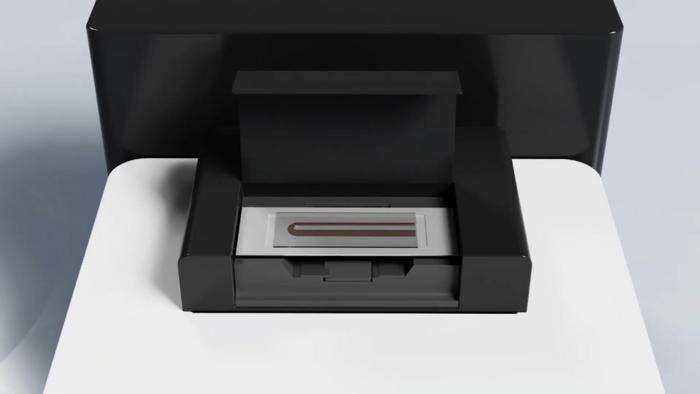“DNA, RNA and proteins are the key players to regulate all processes in the cells of our body,” Leiden Professor John van Noort explains. “To understand the (mis-)functioning of these molecules, it is essential to uncover how their 3D structure depends on their sequence and for this it is necessary to measure them one molecule at a time. However, single-molecule measurements are laborious and slow, and the number of possible sequence variations is massive.”

Credit: TU Delft
“DNA, RNA and proteins are the key players to regulate all processes in the cells of our body,” Leiden Professor John van Noort explains. “To understand the (mis-)functioning of these molecules, it is essential to uncover how their 3D structure depends on their sequence and for this it is necessary to measure them one molecule at a time. However, single-molecule measurements are laborious and slow, and the number of possible sequence variations is massive.”
From decades to days
Now the team of scientists developed an innovative tool, called SPARXS (Single-molecule Parallel Analysis for Rapid eXploration of Sequence space), that allows for studying millions of DNA molecules simultaneously. “Traditional techniques that allow one sequence to be probed at a time usually take hours of measurement time per sequence. With SPARXS, we can measure millions of molecules within a day to a week. Without SPARXS, such a measurement would take several years to decades,” says Delft Professor Chirlmin Joo.
“SPARXS enables us to study large sequence libraries, providing new insights into how the structure and function of DNA depend on sequence. Additionally, the technique can be used to quickly find the best sequence for applications ranging from nanotechnology to personalised medicine,” PhD Candidate Carolien Bastiaanssen adds.
Never combined before
To create their new SPARXS technique, the researchers combined two existing technologies that had never been paired before: single-molecule fluorescence and next-generation Illumina sequencing. In the first technique, molecules are labelled with a fluorescent dye and visualised using a sensitive microscope. The latter technique reads out millions of DNA codes simultaneously. Joo: “It took a year to determine whether combining the two techniques is feasible, four more years to develop a working method, and two additional years to ensure accuracy and consistency in measurements while managing the vast amount of data generated.”
“The real fun and interesting part started when we needed to interpret the data,” first author Ivo Severins says. “Since these experiments that combine single-molecule measurements with sequencing are completely new, we had no idea what results we would and could obtain. It required a lot of searching within the data to find correlations and patterns, and to determine the mechanisms that underly the patterns that we see.”
Overcoming data processing challenges
Another challenge they had to overcome was handling the large amount of data, Van Noort adds: “We had to develop an automated and robust analysis pipeline. This was particularly challenging as single molecules are fragile and yield only a tiny amount of light, making the data inherently noisy. Furthermore, the resulting data do not directly provide insights into how the sequence affects the structure and dynamics of DNA, even for the relatively simple DNA structures that we studied. To really test our understanding, we set up a model that incorporates our knowledge of the DNA structure, and compared it with the experimental data.”
Medical advances
More precise manipulation and understanding of DNA sequences will likely lead to advances in medical treatments, such as more effective gene therapies and personalised medicine. The researchers also foresee biotechnological innovations and overall a better understanding of biology at the molecular level. Joo: “We expect applications in genetic research, drug development, and biotechnology will begin to emerge within the next five to ten years.”
Journal
Science
Method of Research
Experimental study
Subject of Research
Cells
Article Title
Single-molecule structural and kinetic studies across sequence space
Article Publication Date
22-Aug-2024



